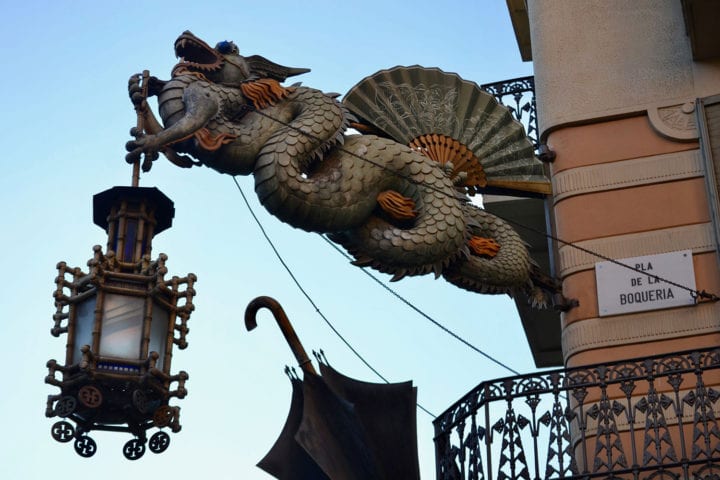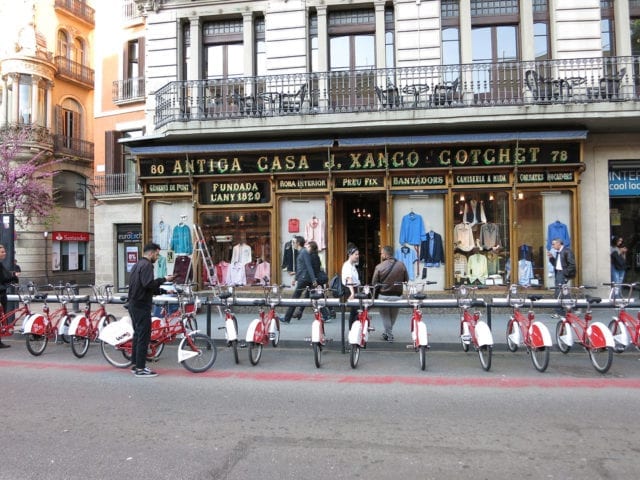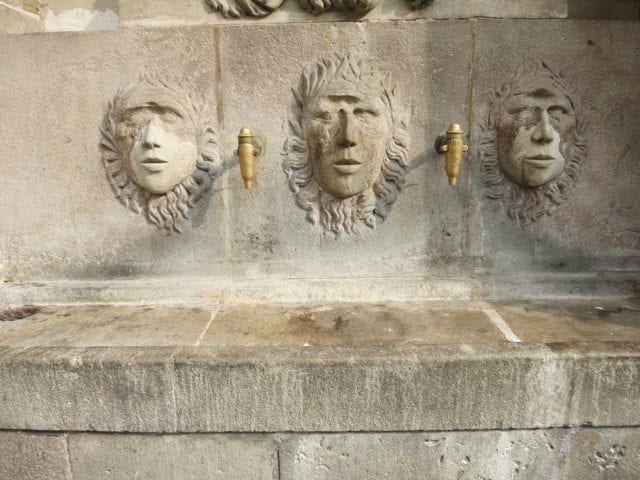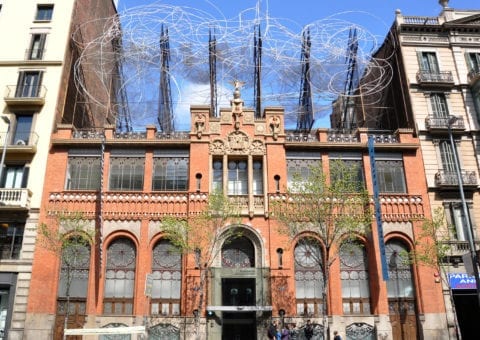This name is given to the plain between Calle Hospital and Calle de la Boquería. Before Las Ramblas existed as a promenade, it was a river that collected its waters from the Collserola mountain range. El Pla was one of the busiest places and it was in front of one of the entrance gates to the wall, that of Santa Eulalia, an arabesque gate of great beauty that Ramón Berenguer IV brought from the conquest of the city of Almería, later the portal was renamed La Boqueria. When the city walls were demolished, an esplanade was left which was called “Pla de l’Os”.
You can see a fountain next to where the door of Santa Eulalia was, it is “La Font del Pla de la Boquería”, in neoclassical style it is made of marble on stone from the Montjuïc quarry. It has three faces with their spouts, surrounded by a lion’s mane, in the upper part is the coat of arms of Barcelona and at its feet two elements that symbolize Hercules; the club and the skin of the Nemean lion.
The Mosaic of Joan Miró.
Right in the center of the promenade we will find the Joan Miro mosaic on the pavement, which for many passers-by goes unnoticed. The work of 65 m2 in the shape of a sphere was inaugurated in 1977 by the mayor Socias Humbert, the tiles were placed by the master ceramicist Joan Gardy Artigas and his son.
Curiosities:
The initial name was “Pla de l’Os”, this popular denomination comes from the phrase “te un os a l’esquena” (it has a bone in its back), referring to the characters that wandered the Rambla without doing anything useful. .
There is a legend about the fountain, it is said that a severed child’s finger was found clogged in one of the pipes, which made people suspiciously go to look for water.












